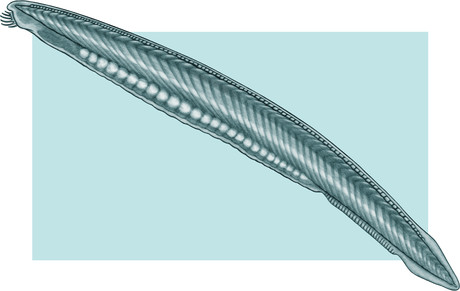The ancient history of DNA control

An international study has revealed that the tricks DNA uses to control gene expression — which genes are turned on and off, and when — may have originated much earlier than was previously thought.
One of the lead authors on the study, published in the journal Nature, was Dr Ozren Bogdanovic, from Sydney’s Garvan Institute of Medical Research. He described DNA as “a powerful code”, with specific parts turned on or off in different types of cells.
“In blood cells, some parts of the code are turned on — so proteins that bind oxygen are present,” Dr Bogdanovic explained. “But in brain cells, DNA makes sure those same parts are off and other parts on — so proteins that can send electrical signals are present instead. The way each cell makes those choices is what we call ‘DNA regulation’.”
Collaborating with researchers from Australia, Spain, France and the UK, Dr Bogdanovic focused on a type of DNA regulation process called ‘DNA methylation’ — a chemical modification of the DNA that tells genes when to switch on or off. In an effort to better understand how DNA methylation controls DNA, the team turned to one of our distant relatives — an ancient, translucent fish-like organism called the amphioxus.
This small marine organism — full name Branchiostoma lanceolatum — spends the majority of its life buried in the sand, filter-feeding a variety of plankton. Although it has a similar body plan to fish, its lack of paired fins or limbs makes it quite a poor swimmer.
“Most studies on DNA methylation have focused on organisms that are either too similar to humans, like mice — also a mammal — or too different, like flies, which have zero DNA methylation,” Dr Bogdanovic said. “We have been missing the ‘Goldilocks zone’ — not too close, not too distant, just right — for understanding methylation.
“With amphioxus, we have one of the closest living invertebrate relatives to humans — almost a vertebrate, but not quite.”
In amphioxus, the researchers discovered the first-ever evidence of DNA methylation as a tool to regulate gene expression in an invertebrate. According to Dr Bogdanovic, “We have always believed that DNA methylation, as a method of DNA regulation, was found only in vertebrates. But here, we have evidence of DNA methylation in regions that are used to regulate gene expression, for the first time, in an invertebrate species.”
Their findings suggest that this method of DNA regulation is much older than previously thought — millions of years earlier, according to Dr Bogdanovic. “And this tells us a lot about how DNA regulation evolved, but also helps us understand more about how it works in more complex organisms, like ourselves.”
This small marine organism has thus offered a unique research opportunity, with Dr Bogdanovic stating, “Amphioxus lies right at the vertebrate-invertebrate boundary, so it’s perfectly positioned to help us understand how our genomes made the leap from invertebrate to vertebrate.”
And the team has discovered that amphioxus is similar to vertebrates in more ways than one.
“There is a point during embryonic development where all vertebrates look practically identical — it’s called the phylotypic stage,” explained Dr Bogdanovic. “If you take a human egg, a mouse egg and a fish egg, they all look very different, and we all look very different full grown. But at the phylotypic stage — about four weeks for a human embryo, 10 days for a mouse embryo and one day for a fish embryo — they look very much alike, and even their gene expression is eerily similar.
“Amphioxus is the first invertebrate we’ve seen that also goes through the phylotypic stage. They look highly similar to vertebrate embryos at this stage, and also have similar gene expression patterns.”
Dr Bogdanovic speculates that all these findings could be connected, saying, “It’s possible that amphioxus goes through this developmental stage — like vertebrates — specifically because, like vertebrates, amphioxus utilises more complex gene-regulatory strategies at this stage.”
Although it’s too early to confirm those suspicions, Dr Bogdanovic plans to continue investigating the link between vertebrates and invertebrates, to gain a better understanding of DNA regulation.
“This will allow us to deepen our understanding of how DNA regulation works, and especially how it goes wrong in disease. Understanding these processes has the potential to help us better understand and ultimately treat disease.”
Antibiotics hinder vaccine response in infants
Infants who received antibiotics in the first few weeks of life had significantly lower levels of...
Colossal announces 'de-extinction' of the dire wolf
Colossal Biosciences has announced what it describes as the rebirth of the dire wolf, which would...
Aspirin could prevent some cancers from spreading
The research could lead to the targeted use of aspirin to prevent the spread of susceptible types...




